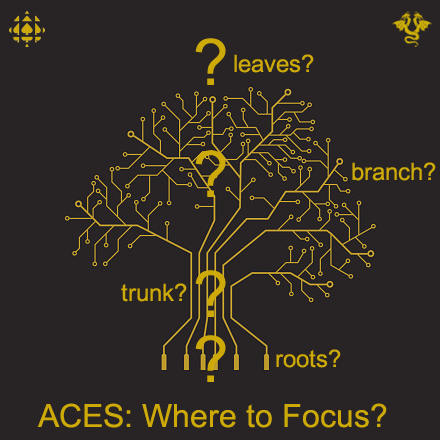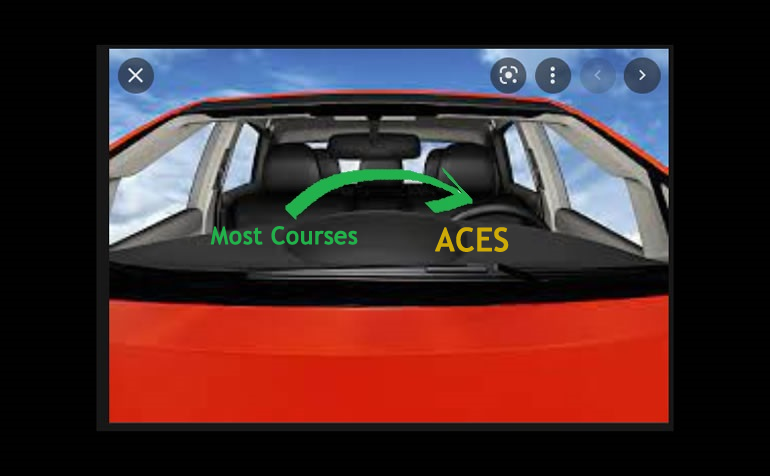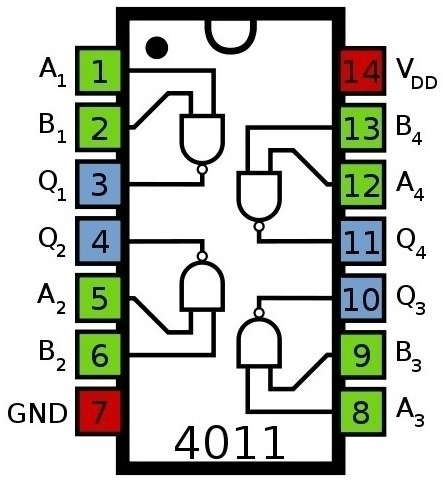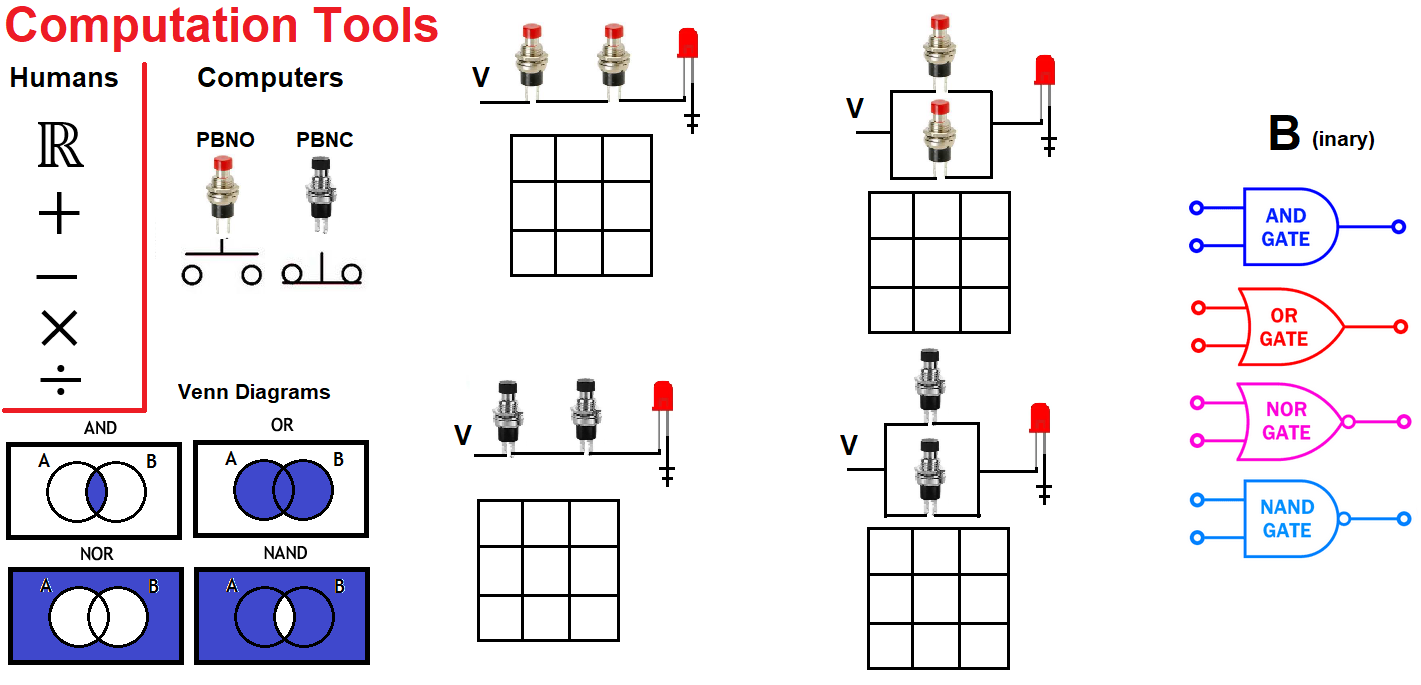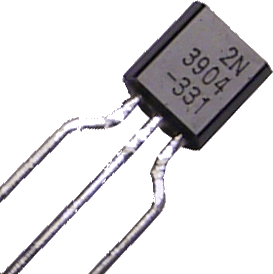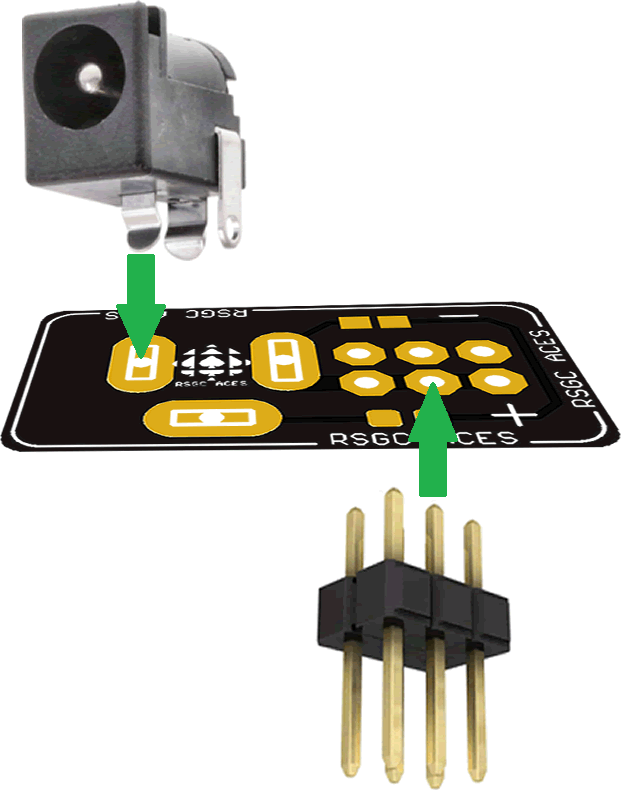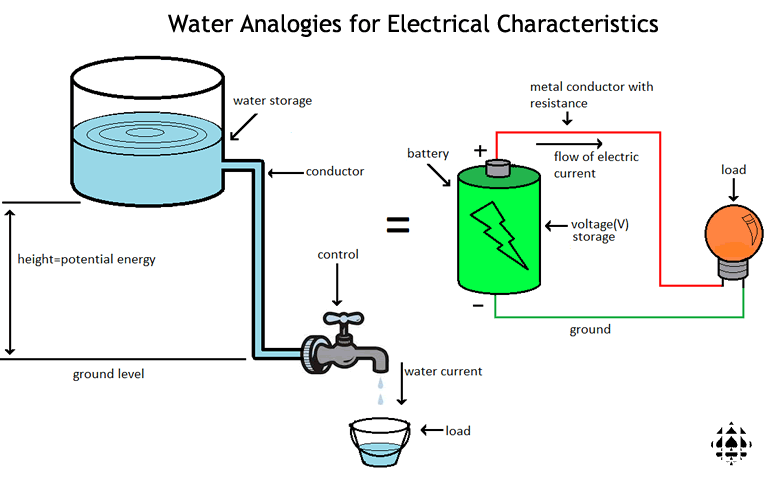END OF COURSE
DER Submission Tonight
Counting Circuit
Finishing Touches
38
May 25
May 25

Counting Circuit Case
37
May 23
May 23
Stage G:
Counting Circuit PCB
and Supplemental Parts
Stage G Soldering Tips
36
May 18
May 18
NGO Frequency, 4510
Counting Circuit
E. Binary Coded Decimal (BCD) Decoder
The 4511 BCD to 7-Segment Decoder
35
May 16
May 16
Binary Up/Down Counter (4510)
The 4516 Up/Down (0-15) Counter
C. Decade Counter (4017)
NGO Square Wave Output as Clock Input
to our FIRST Specialized IC:
The 4017 Decade Counter
32
May 10
May 10

Counting Circuit
Explore changes to
RC1 and RC2 components
Analog and Digital Interfacing Example:
The Potentiometer into a NAND Gate?
Explore changes to
RC1 and RC2 components
Analog and Digital Interfacing Example:
The Potentiometer into a NAND Gate?
31b
May 8
May 8

31a
May 8
May 8

Counting Circuit
A. Button Input
Animations: tp1, tp2, 3
B. NAND Gate Oscillator (4011) Part 1
Animation: TP3, RC Drain
A. Button Input
Animations: tp1, tp2, 3
B. NAND Gate Oscillator (4011) Part 1
Animation: TP3, RC Drain

1.4

30
May 4
May 4

1-Bit Magnitude Comparator: Encasement
Work Period
AF DG KH WH RJ* SL
OL MM KS GS WT NV
RA CA TB WC* MD EH
BK RL CM CMaz EP
LQT HS ST MZ
29
May 2
May 2

Review of
1-Bit Magnitude Comparator: Prototype
Review of
1-Bit Magnitude Comparator: PCB
Review of
1-Bit Magnitude Comparator: Encasement
28
Apr 28
Apr 28
1-Bit Magnitude Comparator: Prototype

1-Bit Magnitude Comparator
PCB and Case Preparations
(in-class Instructions)

1-Bit Magnitude Comparator
PCB and Case Preparations
(in-class Instructions)

27
Apr 26
Apr 26



Falstad: Full Adder
Just as mathematical expressions
can be formed by combining
arithmetic operators, so, too,
are useful boolean expressions
formed by combining logic operators (gates)
Combinational Circuits
(Multiple Logic Gates)
ACES' Frame Player:
Combinational Circuits
can be formed by combining
arithmetic operators, so, too,
are useful boolean expressions
formed by combining logic operators (gates)
Combinational Circuits
(Multiple Logic Gates)
ACES' Frame Player:
Combinational Circuits
Transitioning...
ACES' Frame Player: Analog to Digital
 COMPUTER MATH/LOGIC (p. 44)
COMPUTER MATH/LOGIC (p. 44)
Recall VENN Diagrams
BOOLE(AN) LOGIC OPERATORS
ACES' Frame Player: Button Logic
ACES' Frame Player: Transistor Logic
ACES' Frame Player: Analog to Digital
Recall VENN Diagrams
BOOLE(AN) LOGIC OPERATORS
ACES' Frame Player: Button Logic
ACES' Frame Player: Transistor Logic
ANALOG 2: BUTTONS, SWITCHES, CAPACITORS, TRANSISTORS and INDUCTORS
23
Apr 14
Apr 14
The Capacitor Visualizer
Soldering Video Tutorial
Solder Joints

22
Apr 12
Apr 12
Joule Thief Battery Charger
Bring Back the "Dead"
Inductors
Simply Electronics:
 Part 1,
Part 1,  Part 2
Part 2
 Inductance
Inductance
ACES Frame Player: Toroid Winding
ACES Frame Player: Joule Thief
 Make a Joule Thief
Make a Joule Thief
Bring Back the "Dead"
Inductors
Simply Electronics:
ACES Frame Player: Toroid Winding
ACES Frame Player: Joule Thief
(1797–1878)

(Connections)


21
Apr 6
Apr 6

Dual Role of Transistors:
Switching and Amplification
 Analog vs Digital
Analog vs Digital
Falstad Circuit Simulation Applet:
Switched LED, Transistor Tester
Alternating LEDs, Fade In Fade Out
Switching and Amplification
Falstad Circuit Simulation Applet:
Switched LED, Transistor Tester
Alternating LEDs, Fade In Fade Out

20
Apr 4
Apr 4
The Capacitor Visualizer
Soldering Video Tutorial
The device that changed everything...
Transistor Basics, Testing, and Switches
The NPN Transistor (2N3904): Animation
The PNP Transistor (2N3906): Animation
TO-92 (BJT) Datasheets:
2N3904 NPN, 2N3906 PNP
ACES' Frame Player: Transistors
DMM: Capacitance
Review Capacitor Circuits on page 32
Prototype the circuit to the left...
...and then the rollover modification
Mathematics: Exponential Growth (& Decay)
Gordon Moore (1929-2023): Moore's Law
Capacitors as Timers: `tau = R times C`
Review Capacitor Circuits on page 32
Prototype the circuit to the left...
...and then the rollover modification
Mathematics: Exponential Growth (& Decay)
Gordon Moore (1929-2023): Moore's Law
Capacitors as Timers: `tau = R times C`

Introducing Delays (TIMING)
into our Circuits
Capacitor Codes


The Charge/Discharge Circuit
ACES' Frame Player: Capacitors
into our Circuits
Capacitor Codes


The Charge/Discharge Circuit
ACES' Frame Player: Capacitors
Capacitance:
UNITS:
(Micro)Farads (μF)
RANGES:

Tantalum vs Ceramic
AF DG KH WH RJ* SL
OL MM KS GS WT NV
RA CA* TB WC MD EH
BK RL CMar CMaz
EP HS LQT ST MZ
DER Exemplar

15
Mar 6
Mar 6
Header&Footer, Date&Time, Tables,
Page Break, Section Break
Table of Contents
DER Exemplar

13
Feb 28
Feb 28
First Look at the...
Voltage H-Bridge
Recall the DUAL Uses for the
Potentiometer
Variable Resistor or Voltage Divider
Voltage H-Bridge
Recall the DUAL Uses for the
Potentiometer
Variable Resistor or Voltage Divider
Voltage H-Bridge

12
Feb 24
Feb 24

Analog to Digital
from continuous to discrete




11
Feb 22
Feb 22
PBNO

PBNC


PBNC

Buttons (PBNO, PBNC)
Circuit Symbols (p. 8)
ACES' Frame Player: Buttons
(Digital) Button Logic:
Pull-Down and Pull-Up Configurations

ANALOG 1: SIGNALS, SUPPLY, SYMBOLS, SCHEMATICS and RESISTORS
10
Feb 16
Feb 16
ACES' Frame Player:
Variable Resistors
2. LDR: Light-Dependent Resistor
aka Photocell, Photoresistor, Optoresistor
3. Thermistor:
Temp-Dependent Resistor
4. FSR:
Force-Sensitive Resistor
5. Flex Sensor:
Flex-Sensitive Resistor
J. Vretenar's: The Bionic Hand
The Bionic Hand
Variable Resistors
2. LDR: Light-Dependent Resistor
aka Photocell, Photoresistor, Optoresistor
3. Thermistor:
Temp-Dependent Resistor
4. FSR:
Force-Sensitive Resistor
5. Flex Sensor:
Flex-Sensitive Resistor
J. Vretenar's:
Power: `P=IV`
Circuit Symbols
(p. 8)
9
Feb 14
Feb 14
![]() The 1N400n Diode
The 1N400n Diode
(for Circuit
Protection)
Interactive Circuits :)
Fixed vs Variable Resistors
1. The Potentiometer (p. 10)
ACES' Frame Player: Potentiometer


Using Ohm's Law
and Kirchhoff's Laws
to
Analyze Circuits
and Kirchhoff's Laws
to
Analyze Circuits
ACES' Frame Player:
LED Circuits
Using Ohm's Law to determine the
Current (I) in a circuit :
`I=V/R`
Using Ohm's Law to determine the
Current (I) in a circuit :
`I=V/R`

(aka Schematics)
Circuit Symbols (p. 8)
Our first circuits...
ACES' Frame Player: Fixed Resistors
DMM Confirmation of KVL
(Waterfall Model of Voltage Drop)
(in terms of Voltage)
Voltage: `V=IR`
Power: `P=IV`
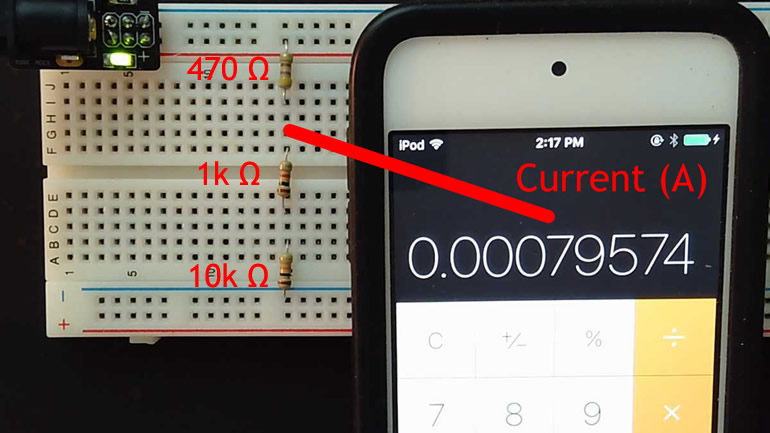



ALPHA,
BRAVO,
CHARLIE,...
on the right foot...
Watch B. Eater's:
by knowing multiple
Alphabets and Languages
So, today, memorize the
Greek and Phonetic Alphabets
found on Page 78 of your DC Circuits Workbook

4
Jan 31
Jan 31
Second DMM Function:
2. Resistance (Ω)

Fixed (Current-Limiting)
Resistor Applet
Our first circuits...
ACES' Frame Player: Fixed Resistors
2. Resistance (Ω)
Fixed (Current-Limiting)
Resistor Applet
Our first circuits...
ACES' Frame Player: Fixed Resistors


ResistorCircuitAnalysis
3
Jan 27
Jan 27

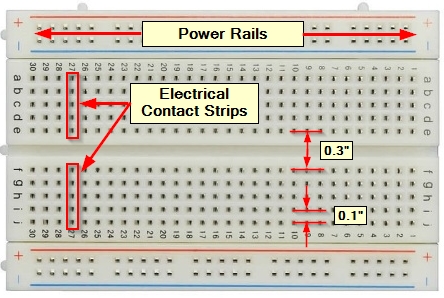
2
Jan 25
Jan 25
Giants of Electricity p.80
Discussion:
What is Electricity?
The Atom
Water Analogies
Flow Models (Direction):
Electron (Neg →Pos)
(Science)
vs
Conventional (Pos→Neg)
(Electronics)
Discussion:
What is Electricity?
The Atom
Water Analogies
Flow Models (Direction):
Electron (Neg →Pos)
(Science)
vs
Conventional (Pos→Neg)
(Electronics)
DC Circuits' Cover Video...
G. Davidge's: A Counting Circuit
A Counting Circuit
Foundations: Grade 9 Science...
 Voltage
Voltage
Ohm's Law (in terms of Voltage):
`V=IxxR`
 Current
Current
Ohm's Law (in terms of Current):
`I=V/R`
Your Future: EVs and Batteries
G. Davidge's:
Foundations: Grade 9 Science...
Ohm's Law (in terms of Voltage):
`V=IxxR`
Ohm's Law (in terms of Current):
`I=V/R`
Your Future: EVs and Batteries


Alkaline Battery Chemistry
1
Jan 23
Jan 23
REPUTATION and RESPECT
RSGC ACES Mission: Taking a
Short, Medium, and Long Term View
of your Futures
ACES Hall of Fame:
D. Raymond '19
E. McAuliffe '18, E. Peterson '18
M. Elia '15 (Argon Prototypes)
RSGC ACES Mission: Taking a
Short, Medium, and Long Term View
of your Futures
ACES Hall of Fame:
D. Raymond '19
E. McAuliffe '18, E. Peterson '18
M. Elia '15 (Argon Prototypes)
Foundations
